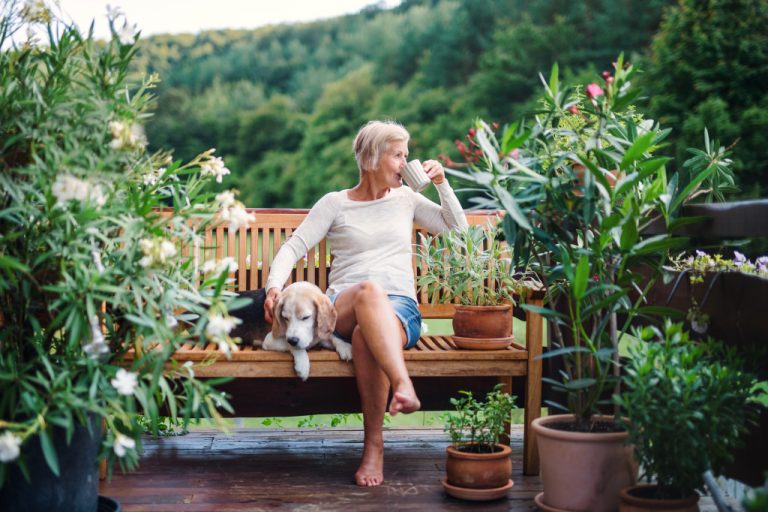Spring has sprung, so it’s time to get outside and start gardening! If you’re a pet owner, you might wonder how to keep your furry (or scaly) friend safe while you’re busy tending to your garden. Never fear, we’ve got you covered with our top 7 tips for gardening with pets.
Choose the right plants
Did you know that some common household plants can be harmful (and even deadly) to pets? To help you keep your home safe for both two- and four-legged family members, here are a few tips on choosing the right plants.
First, do your research. There are plenty of online resources that can help you identify which plants are toxic to pets. Once you’ve compiled a list of potentially dangerous plants, look closely at the ones you have in your home. If any of them are on your list, it’s time to eliminate them.
Next, consider what kinds of plants would be safe for your pets. Consider herb gardens, for example. Many herbs are perfect for pets – they can help settle upset stomachs and promote healthy fur and skin. Ask your veterinarian or local pet store for recommendations if you’re unsure where to start.
Finally, remember that even non-toxic plants can pose a choking hazard to curious pets. So if you have houseplants, make sure they’re out of reach – or better yet, keep them in rooms your pets don’t have access to.
Train your pet
Gardening with pets can be a great way to enjoy the outdoors with your furry friend. However, it’s essential to be aware of the potential hazards that can occur. Pets can inadvertently damage plants, and sharp tools can harm curious paws. The best way to prevent accidents is to train your pet. Dog training programs offer various options for teaching basic obedience commands such as sit, stay, and come. Enrolling your furry friend in a training program can help you create a safe and enjoyable gardening experience. With a bit of patience and practice, you can easily teach your pet to safely enjoy the garden with you.
Use pet-safe fertilizers and pesticides
Any pet owner knows that our furry (and sometimes not-so-furry) friends are part of the family. But when it comes to gardening, it’s vital to use pet-safe products to protect our pets from harmful chemicals. Fertilizers and pesticides can contain harmful toxins that can make your pet sick, so look for products marked “pet-safe” or “non-toxic.” You can also take some simple precautions to keep your pet safe, such as keeping them out of the garden area while working with chemicals and washing their paws after they’ve been in the garden.
Keep your garden clean

Pets can inadvertently introduce diseases and pests, and they can also damage plants. Fortunately, you can take a few simple steps to reduce the risks. Make sure your pet is up to date on its vaccinations. This will help to protect both your pet and your plants from disease. Also, regularly inspect your garden for signs of pests or disease. If you see any problems, address them immediately to prevent further spread. Finally, keep your garden clean and tidy. Remove dead leaves or plant debris, and consider using raised beds or containers to limit your pet’s access to certain areas. Taking these precautions allows you to enjoy a safe and healthy garden with your four-legged friend.
Provide plenty of water
Pets can get dehydrated quickly, especially in warm weather, so ensure they have access to a freshwater source. A small bowl or water dish placed in the shade is a good way to keep your animal hydrated while spending time in the garden with you. You might also want to consider planting some pet-friendly plants or putting up a fence to keep them away from areas where they might not be safe.
Give them a place to rest
Gardening can be tiring work, even for humans! Give your pet a place to take a break in the shade so they can rest their weary bones. A dog bed or cat tree placed under a shady tree is perfect for this purpose.
Be mindful of potential hazards
Be aware of potential dangers in your garden, like holes, sharp tools, and toxic chemicals—just to name a few—so you can take steps to avoid them or remove them entirely if necessary. Keeping an eye on potential hazards will help ensure that both you and your pet have a safe and enjoyable gardening experience together.
Final thoughts
Gardening with pets doesn’t have to be difficult—just use common sense and take some precautions, like choosing pet-safe plants and using pet-safe fertilizers and pesticides, to ensure that both you and your furry friend have a good time outdoors this spring season!
